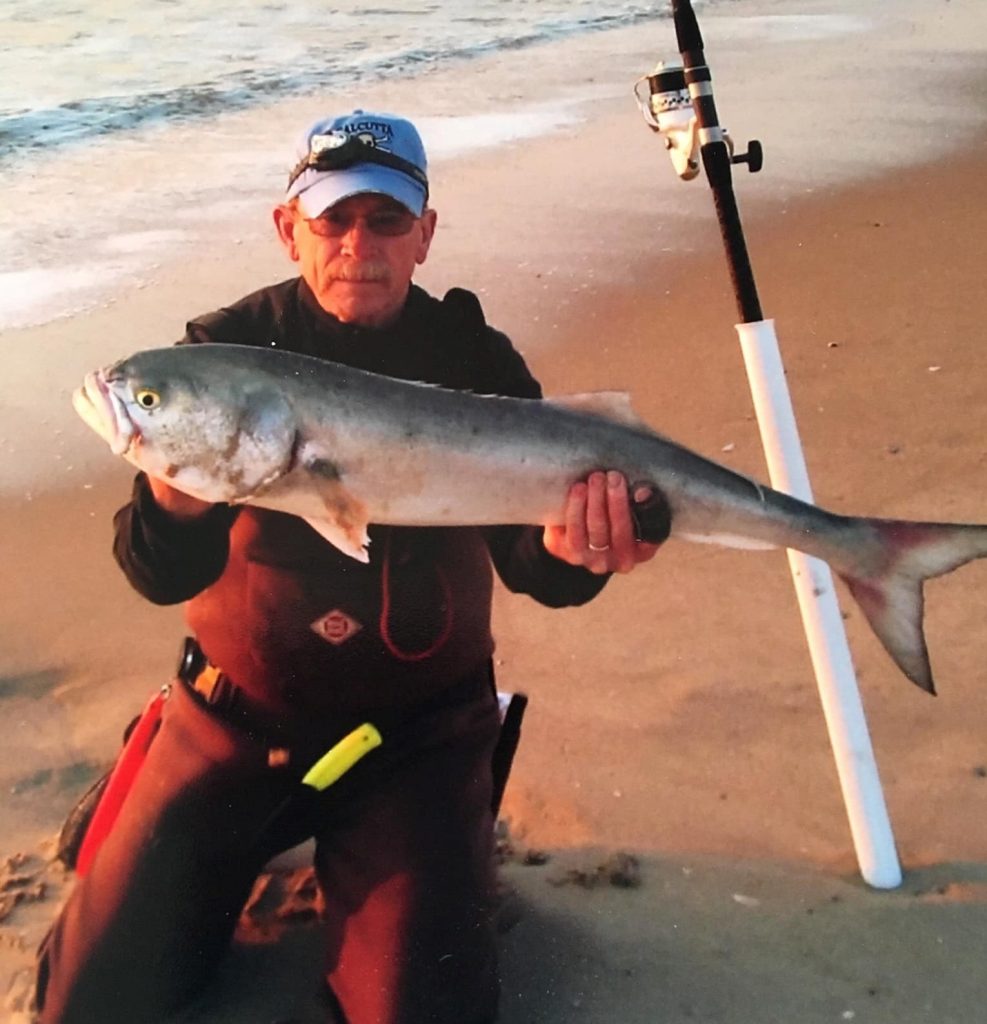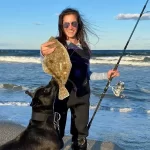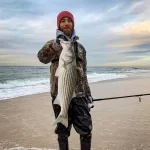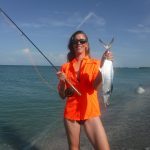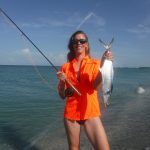11 Useful Surf Fishing Tips
This article will list 11 useful surf fishing tips. Surf fishing is very popular from the beaches all across the country. There is something magical about casting a lure or bait out into the ocean or other open waters. It is a fairly uncomplicated and enjoyable fishing method.
The 11 useful surf fishing tips are;
- Understand the local seasonal migrations
- Cut baits are usually best for surf fishing
- The fish-finder rig is best for surf fishing
- High tide is usually the best tide for surf fishing
- Dawn, dusk, and nighttime are most productive
- 2 rod and reel combinations will get the job done
- Heavy lures are best for surf fishing
- Live bait can be used for surf fishing
- Low tide is a great time to scout the beach
- The dropper rig is another effective surf fishing rig
- Other accessories are important when surf fishing
11 useful surf fishing tips
My name is Capt Jim Klopfer and I am a fishing guide in Florida. I grew up surf fishing the beaches of Chesapeake Bay and the Atlantic Ocean. Assateague Island is one of my favorite places on Earth! These 11 useful surf fishing tips will help both seasoned and novice anglers catch more fish.
Understand the local seasonal migrations
This is perhaps the most important surf fishing tip. It does not matter how skilled an angler is if no fish are present. Every area has seasonal migrations, and understanding these will allow anglers to find fish and also move along with their migration. In some areas, there are species to catch all year. That is the case where I live, in Florida.
Inexperienced anglers will find local bait shops to be an incredibly valuable resource! Tackle and bait sales will usually come along with some great advice. Online Facebook groups and forums are also excellent sources of local information. There are also some great articles online and in books as well. Finally, nothing beats actual experience and time out on the beach.
Cut baits are usually best for surf fishing
In many situations, live bait is preferred. This is not really the case when surf fishing, for several reasons. The main advantage to using cut bait is the durability. A chunk of cut bait will stay on the hook longer and resist bait-stealers. It also stays on the hook better during the long, hard casts that are often required. Finally, it is much more convenient to use dead bait as opposed to trying to keep bait alive. This includes frozen or cut shrimp as well.
Just about any fish that is legal to keep can be cut into strips or chunks and used as bait. Generally, oily fish are best. When I visited Maine, frozen mackerel was the recommended bait. Here in Florida, mullet work well. Where possible, fresh cut bait works best, but frozen bait will be fine. This includes squid and shrimp as well. There are several companies such as Fishbites that cell commercially made baits that are fished like cut bait. They work well and are extremely convenient.
The fish-finder rig is best for surf fishing
Next on my list of surf fishing tips is that the fish-finder rig is the best all round rig to use when surf fishing, particularly for larger fish. The rig consists of a sleeve which the mainline runs through, followed by a swivel. The swivel stops the fish finder from sliding. A leader is then attached to one end of the swivel and the other end has the hook. A clip on the sleeve allows for quick and easy weight changes.
The beauty of this rig is that it allows a fish to pick up the bait and move off without feeling the resistance of the sinker. Also, it’s most fish are feeding on the bottom, that is right where the bait is present. Anglers can ache the leader as long as a desire, 3 feet is a good all-around length. If crabs or rays become a problem, a small float can be added near the hook to raise the bait up just above the bottom. I like to use a fairly large circle hook, size 6/0 or so.
High tide is usually the best tide for surf fishing
Tides are very important in all types of saltwater fishing, and surf fishing is no exception. In my experience, I have found that the best time to fish is two hours before and after the high tide. This is especially true if the high tide occurs during a feeding period or during a low light period.
During this high tide, fish will often be found very close to shore, or right in “the wash” as it is called. Predator fish will use cuts in the bars to move from deeper water in closer. This is one reason why I prefer to fish the high tide as I can often go a little bit lighter with the tackle and enjoy the sporting aspects of fishing.
Dawn, dusk, and nighttime are most productive
It is no secret that fish often bite best early and late in the day. This applies to surf fishing as well, although fish can certainly be caught throughout the day as well. Night time is also productive as many of the species are nocturnal by nature, especially striped bass. Seasoned anglers will often pick a day to fish where the high tide coincides sunrise or sunset.
2 rod and reel combinations will get the job done
I use two basic rod and reel combinations when surf fishing. One is the standard long, heavy rod. I prefer a 10 foot rod with a 6000 series reel though anglers chasing larger fish will go up to 15 foot long rods and heavier reels. I use this rod and reel combination to bottom fish with cut bait most of the time.
Read my comprehensive article on surf fishing
The second rod and reel that I use when surf fishing is my basic inshore saltwater fishing outfit. It consists of a 7 foot medium action rod with a 2500 series reel. This is the same, that I use for the vast majority of my inshore saltwater fishing. I use these two different rods to take a two-pronged approach. While the cut bait soaks on the bottom, I can cast artificial lures into the trough closest to shore.
Heavy lures are best for surf fishing
While natural bait accounts for a lot of fish that are caught in the surf, I really prefer casting artificial lures when possible. Fishing this way also allows me to walk up and down the beach, covering more area in search of fish. Due to the nature of the rough surf along with the fact that anglers are often casting into the wind, heavier artificial lures work best.
Read my article on the best surf fishing lures
Spoons are terrific surf fishing lures! They are heavy and cast a long way and put out a lot of flash and vibration, mimicking a wounded bait fish. They are also quite aerodynamic which helps when it is breezy. Plugs are also productive, particularly top water poppers when fish are feeding on the surface. However, anglers need to be careful of the treble hooks that they come with. Jigs are the third lure that I like to use when surf fishing, especially when the fish are close to the beach.
Live bait can be used for surf fishing
While cut bait is most often used by anglers surf fishing, live bait can certainly be used as well. Where I live on the West Coast of Florida, shrimp is king and will catch just about every species that swims. A small bucket with a battery-powered aerator will keep a few dozen shrimp or bait fish alive and frisky.
Other live baits that anglers use when surf fishing are minnows or other bait fish along with crabs. Fiddler crabs and mole crabs are excellent baits for pompano and sheepshead. They are fairly easy to keep alive in a bucket. Live minnows are the most troublesome, as anglers must either purchase or catch the minnows and then keep them alive in an aerator bucket. However, some anglers find them to be worth the trouble, especially for flounder and fluke.
Low tide is a great time to scout the beach
Reading the beach is a skill that takes years to master. It basically means looking at the waves and their behavior and trying to determine what is beneath them. Cuts and bars will be used by fish as navigation routes into the troughs closer to the beach. Finding the deeper holes and cuts of the bars will certainly increase success. I try to do a lot of my scouting on the very low tides, when more of the bars are exposed. I then mark or make a mental note of the spot and come back in fishing during the high tide.
The dropper rig is another effective surf fishing rig
The other rig that I use when surf fishing with bait is the dropper rig, also known as a spreader rig. I mostly use it when targeting smaller surf panfish such as whiting and pompano. The rig consists of a couple of hooks spread apart which results in the baits being presented at a couple different depths. I usually do a simple rig or I attach a pair of #4 hooks on droppers right off the main line, then add the sinker at the bottom. These rigs are available for purchase at every bait and tackle shop.
Other accessories are important when surf fishing
There are a few other pieces of equipment that every angler surf fishing needs. A sand spike is invaluable! It not only allows anglers a way to get the line up over the crashing waves, it keeps the reel up out of the sand when rigging or rebating the hook. A beach chair is a nice convenience while waiting between bites. Some type of measuring tool, pliers, a release tool, a cooler with ice, tackle bag or box, and a hat and sunglasses are other items that I never go surf fishing without.
In conclusion, this article on 11 useful surf fishing tips will hopefully help anglers achieve m


